Leather furniture
Contents
- 1 Leather Furniture - Furniture Leather
- 2 The different types of furniture leather in comparison
- 2.1 Smooth leather with a protective coating on the surface (finished leather, semi-aniline)
- 2.2 Aniline Leather (open pore smooth leather)
- 2.3 Suede, nubuck and buffalo leather (between velvet like leather and aniline leather)
- 2.4 Pull up leather - Greased leather - Waxed leather - Oiled leather - Vintage leather
- 2.5 PU leather - foil-coated split leather
- 3 What should be considered when buying new leather furniture
- 3.1 Advice
- 3.2 Test methods for leather - Leather standards
- 3.3 Place of purchase furniture store - exhibition
- 3.4 Place of purchase internet
- 3.5 Collected cases of bad experiences
- 3.6 Origin of the furniture - Origin of the leather - Where the leather was tanned?
- 3.7 Thickness of the leather
- 3.8 Farbe des Leders
- 3.9 Ledermöbel - 5 Jahre Garantie
- 3.10 Möbelgarantien verlängern - Spezialimprägnierungen
- 3.11 Leather care
- 3.12 Basic rules when dealing with leather funiture
- 4 Videos about leather
- 5 Weitere Informationen
Leather Furniture - Furniture Leather
According to statistics, about 30% to 50% of all upholstered furniture sold in Germany are covered with leather. For a large furniture set 6 to 7 skins can be processed.
In upholstered furniture cowhide is processed. There are very rare exceptions. Very rarely, sheep leather is processed. In a normal furniture store furiniture with sheep leather is not available. Sheep leather furniture can only be obtained by niche providers.
There is no standard furniture leather, but there are many types of leather that are processed on furniture. These differ in the tanning process, manufacturing and dyeing method and price ranges. From high quality aniline leather to coated split leather or synthetic leathers, all materials are processed.
It is not correct, if you believe that "leather furniture" always mean good quality. As with other natural materials (wood, stone, etc.) there are many different qualities. Usually the price is an indicator of what quality is acquired. No dealer has anything to give away.
To better understand the different leather qualities, here follows the recommendation for the purchase of new leather furniture. With this information you can get an overview of the different types of leather and the possible advantages and disadvantages.
Exotic: Sofa with real Crocodile leather.
The different types of furniture leather in comparison
The most common types of leather that are processed in the furniture sector are:
- Smooth leather with a coloured finish
Significantly less are the following types of leather:
- Only dyed aniline leather
- Velvet like suede and nubuck
- Buffalo leather
- Antique leather
- Pull up leather (do not confuse with PU leather!)
- PU leather (coated split leather)
Smooth leather with a protective coating on the surface (finished leather, semi-aniline)
The most common leather for furniture is semi-gloss, surface-colored smooth leather. Its always cowhide, which has obtained a protective finish. The leather is easy to clean and care and wear can be easily re-adjust as long as it's not too much or too strong.
The color layer can vary in thickness. If the colour layer is very thin, the leather is called semi-aniline leather (also lightly pigmented nappa leather). It is slightly more sensitive than the more colored leather, but it feels warmer and softer. Car leathers have thick colour layers. Comparing the grip of both types of leather, usually furniture leather is more beautiful. But furniture leather is more subject to the direct skin contact and therefore this aspect is more prominent when buying funiture leather compared to car leather.
In the higher price ranges, the grain texture of the leather is mostly natural. In the lower price ranges, the leather is almost always sanded and embossed. This leads to less waste and even worse skins can be processed because damages from insects, diseases or injurys are better hidden under the embossing. However, an embossing does not always mean a bad leather. There are also high quality embossed furniture and car leather, which received an embossing for design reasons. But be careful for special offers. Therefore often very poor leather is sanded and embossed. Or even split leather is embossed or covered with PU films to make it look like smooth leather. Then its no smooth leather any more, but its usually not properly declared, what it really is. In Germany coated split leather is not permitted to be used for seats, back rests and arm rests.
Surface coloured leather furniture. Because of the protective coating the leather is easy to clean and care.
Darker leather easier to handle than lighter leather. On bright leathers dirt is more visible. Discolouration of textiles or leather and signs of wear are more noticeable on light leather than on darker leather. Who has children and pets, should rather choose darker leather colours. But bright pigmented leather is not so difficult that that it should always be rejected.
Sometimes pigmented leather for furniture is offered as longlife leather. This type of leather is often connected with a 5-year warranty. The warranty applies only to "easy maintenance" and "fading". The warranty applies only when the regular buy and application of a care sets of the furniture manufacturer can be proven. Such warranties are worthless. "Easy maintenance" is not a defined property. Modern pigmented leather is always easy to maintain and does not fade. Signs of wear and unremovable spots are excluded from the warranty. A practical case were the warranty is more valuable than the legal warranty nearly never occures. Often buyers are disappointed when alleged warranty claims prove not to be such. You should only buy such furniture if you would have bought the furniture also without warranty.
Grease stains and other stains are a not a big problem with pigmented leathers, as the colour layer on the top of the leather prevents the absorbtion of liquids. Also fading is not a big problem of pigmented leathers. Modern leather pigments are very resistant to fading.
Important: Semi-aniline leather only has a thin layer of pigments. As a result, such leather earlier tends to grease stains in contact areas and tend more to fading. But semi-aniline leather is not as sensitive as open-pore aniline leather, but have a nicer touch compared to stronger pigmented leather, which are often embossed and sanded.
Conclusion: Pigmented leather is not as soft and warm as aniline leather, but they are more robust and easier to clean and care. The more expensive leather is, the higher is generally the quality. Cheap leather have a lower life expectancy. For special offers, you should always let confirm in the purchase order or in the receipt that you have not bought embossed split leather or a film-coated split leather. Such leather is very vulnerable and has a shorter life expectancy. The best choice of these types of leather is semi-aniline. It costs more, but it is warmer and softer. But always check carefully! Often furniture leather is offered as semi-aniline but is none.
Maintenance advice: Pigmented leather leather is easy to clean and care. There are manufacturers that give a care recommendation. There are also many manufacturers which only recommend an occasional wet wiping. This may be true for the duration of implied warranties. But who doesn`t regularly clean and care his leather (every 3-6 months at least in the contact zone and in direct sunlight is sufficient), will faster get signs of wear and aging and lives on an unhygienic surface.
Advice for stains and damages: Always ask on time for advice. As soon as stains, dryness, brittle, fading or other problems get visible, ask a specialised company for advice. The longer you wait, the harder it is to remove the damages.
Aniline Leather (open pore smooth leather)
Aniline Leather is open pore smooth leather. The advantage of this leather is the warmth and softness. Aniline leather does not feel cold. Aniline leather are natural and beautiful and are therefore also the pinnacle of leather.
But aniline leather is more sensitive. A rubbed in drop of water penetrates the surface. Even if the leather is impregnated by the manufacturer, this impregnation rubs off in areas of use and the leather gets stain-sensitive on the long run.
Aniline Leather is open pore, warm and soft, but sensitive.
Stains can not be wiped off. Liquids sink into the surface and stains remain. In most cases there are no cleaners which can remove such stains. Aniline leather also tends to typical grease stains in head or skin contact areas and are mostly UV-sensitive.
In case of children and pets, chips and fries contact, in direct sunlight and contact with hair without cushions, the use of aniline leather should be avoided.
If you decide on an aniline leather, you probably should choose a darker leather. Black is not necessary. But dark brown, dark green, dark blue or dark red are preferable. But the higher UV sensitivity remains.
Aniline leather is more expensive because only the best skins without damages can be used for this type of leather. Often customers think that the higher price is associated with a greater insensitivity. But this is wrong. Silk is also much more expensive than other fabrics, but nevertheless very sensitive. Same is with aniline leather. Therefore, a good furniture store asks if a customer wishes aniline leather. But this is often not the case.
Aniline leather is beautiful.
Conclusion: Aniline leather is beautiful and the grip nice and warm, but it's sun and stain-sensitive. Therefore, handle it carefully. Avoid sunlight and stains. In doubt choose darker colors. Aniline leather is in the upper price segment. Buy well-known brands and from established dealers.
Maintenance advice: Protect leather from the start with a good waterproofing spray to prevent stains. If the leather gets dry over the years, also use an oil-containing spray. The most important protection is prevention! Therefore, always protect aniline leather well against stains and direct sunlight.
Advice for stains and damages: Always ask for advice in time and avoid worsening the damage by improper means and methods. As soon as stains, brittle, fading or other problems occur, ask a specialised company for advice. The longer you wait, the harder it is to clean or repair.
Suede, nubuck and buffalo leather (between velvet like leather and aniline leather)
These open pore and sanded leathers are usually very sensitive. Stains and fading are typical probelms. As with aniline leather the possibilities of cleaning and repairs are limited.
Conclusion: Nubuck and suede are beutiful types of leather. They are soft and warm, but sensitive to stains and fading. Therefore handle it careful . Avoid direct sunlight and prvent stains. Choose darker colors if possible. If stains, fading or other problems occur, ask as soon as possible a specialised company for advice. The longer you wait, the more hopeless is an easy solution.
Pull up leather - Greased leather - Waxed leather - Oiled leather - Vintage leather
Nowadays vintage leather belongs to the typical range of furniture manufacturers. These are tyes of leather, which get faster patina than other types of leather. The surfaces is finished smooth with |oils and fats that wear becomes quickly apparent by stretching, scratching and friction. It belongs to the nature of this type of leather and such changes are not unwished.
Conclusion: Vintage Leder is durable and easy to maintain. Who is aware that such changes will come with time, will be satisfied with this type of leather. But who is looking for furniture that looks as long as possible same as at the at the day of purchase, won`t be happy with this type of leather.
Maintenance advice: Seek advice with these types of leather. Greased, waxed or oiled leather| is usually easy to clean and maintain. But depending on the gloss and open porosity of the leather, the care instruction can vary. Signs of wear can often be polished off with an appropriate care product.
PU leather - foil-coated split leather
Sometimes furniture is offered with split leather which is coated with a finish and embossed or a layer of embossed and coloured polyurethane is glued to the surface to let it look like the more valuable grain side split. Due to frequent problems after a short life, this kind of leather can hardly be recommended. Because of the coating, such leather is little breathable and you sweat more quickly sitting on it.
Conclusion: In the guest area with little frequency, PU leather is not a problem. But as living room leather in daily use, this type of leather is too often damaged or worn too early. As PU leather are offered very inexpensive, it might be bought if longevity and comfort is not the primary focus.
What should be considered when buying new leather furniture
You can have bad luck when purchasing leather furniture. But there are basic rules that help to avoid the worst mistakes.
Advice
Often the advice on the purchase is poor. Very few sellers of leather furniture can distinguish the different leather types and their advantages and disadvantages well. Complicit are the manufacturers who call all leathers to be insensitive and recommend "wipe with a damp cloth" as best leather care. This race to the least sensitive leather causes that all leathers are touted as easy to maintain. In the initial warranty period, that is correct, but in the following years, some customers are disappointed because the leather does not behave as expected.
A customer with pigmented leather contacts a leather repair company on average after 5 to 10 years for the first time. The customer is just a little disappointed and his problem is usually easy to solve (products for less than 100 €).
A customer with aniline leather surches advice on average after 3 to 6 years, is rather disappointed because the leather was expensive, but an affordable assistance ist often not possible. In about 30% of all cases (large-scale fading, retrackted stains) a professional leather cleaning and colouration with corresponding costs is necessary. Only in dark leather, the rate is more positive.
A customer with suede or nubuck contacts a leather repair company on average before 5 years and is rather unhappy. Simple aid is only possible with slight stains. Customers with buffalo leather seek advice after about 5 to 10 years and are not unhappy with their leather choice. This type of leather is almost only sold in dark colours.
A PU leather customer needs help already after about 2 to 4 years and has often problems, which can't be solved without great expense.
This statistic is only roughly. The individual case depends very much on the intensity of use of the leather. Is the leather constantly in use? Is it permanently in the sun? Does it get dirty? Are there children and pets? The leather is light or dark? How fast was reacted at the first problems? All of these individual factors should be taken into account when selecting the type of leather.
The statutory warranty period is 2 years in Germany. After this time only few manufacturers help in case of problems. Therefore, you have to think carefully about which choice is made before buying. In Norway, the statutory warranty period is 5 years. There the advice of the sales stuff is much better to avoid claim costs later.
Test methods for leather - Leather standards
Each country has its own rules for upholstery leather. There are national and international standards. With upholstery leathers, standards are often less stringent than the standards of the car industry. The standards for upholstery leather are usually determined by the leather manufacturers and furniture manufacturers and are not very strict. It occurs, that an examination confirmes a leather quality as within the norm, but the customer has an unsightly furniture after a few years without own fault.
However, the manufacturer also can not please everyone. The beautiful leather is more sensitive and the easy to care leather is less attractive and feels colder and stiffer. Both isn`t possible at the same time.
There are also numerous repair products and leather repair specialits. But advice has to be asked in time in case of problems. Frequently furniture owners ask for advice too late and a solution of the problem could have been much easier and cheaper if advice would have been seeken a few years earlier.
There are committed furniture stores (mostly family businesses) which give very good advice and provide an excellent customer service. In large furniture chains, the staff tends to be less committed and the contacts are often changing or through third-party service providers. As furniture can not be easily shipped and many repairs can not be made suburb, the costs of a good service are very high. Many manufacturers try do avoid this extra expenditure. But as in any industry, there are excellent providers and others with very poor service.
Low-cost promotion leather furniture tend to be less durable. But customers of IKEA are mostly satisfied with the purchased furniture. IKEA customers are usually very happy with the price-performance ratio. Online customers who purchased cheap offers are often later disappointed.
Place of purchase furniture store - exhibition
It is recommended to buy leather furniture at a long-established local furniture store. There you have better chances to deal with engaged and competent personnel. It's not recommended to buy leather furniture far away from home or at a show. The distance makes the handling of complaints much more difficult. In the big chains experiences are different. Ask questions about the offered materials and the service. You easily notice whether the sales staff is competent and helpful.
In apparently discounted offers you should always take a closer look. Often not only offer cheap, but also the processed materials.
What you should look for when buying leather furniture in furniture stores (especially very cheap special offers):
- Are really all surfaces of leather?
- Is split leather processed?
- Is the description of the processed materials clearly? Sometimes the vendor uses phantasy names which sound like [|[Leather#What materials can be called leather?|real leather]], but it is not. Often the information is well hidden or sometimes the information is even wrong.
- Check that the product description (material specifications / leather type) appears in the order and in the invoice. Otherwise, you have no proof in case of complaints. Always keep the brochures with the bill.
Place of purchase internet
Be careful with "super offers" on the internet. In particular, if there is no shop and no one can be reached by phone. You can not be sure that the dealer is still accessible in case of problems. Often prices on the internet are very low, so that the desire to buy is high. The price advantage is often justified by the missing margins. But often customers have problems with the furniture after buying cheap offers on the internet. Contacts are often unavailable. The leathers are different than indicated. Often the leather furniture comes from Asia and the providers have no knowledge about the processed materials. For online purchases, always check the product immediately and prefer to use the right of return (if possible) instead of discussin the leather quality later.
What you should look for when buying leather furniture on the Internet:
- Is the vendor achievable?
- Call the provider to obtain an impression of the competence.
- Can you check the furniture on the spot? Consider whether it might make sense to invest the time to visit the dealer and to inspect the furniture. Furniture is not cheap.
- How long does the company already exists?
- Are really all surfaces of leather?
- Is split leather processed?
- Is the leather corrected grain (not bad, but also not high quality]?
- Ask where the furniture was produced, where the leather was tanned and where the leather does come from.
- Are the alleged quality brands really well-known brands? Ask for verifiable references.
- Check the appropriate review sites, whether there have been complaints. Caution! Reviews are often cheated.
- Are the material descriptions clearly? Sometimes the vendor uses phantasy names which sound like [|[Leather#What materials can be called leather?|real leather]], but it is not. Often the information is well hidden or sometimes the information is even wrong.
- It happens more often that online retailers do not attach any bills. Always ask for the invoice and note that the product description (material specifications / leather types) are listed in the invoice text. Otherwise, you have no evidence in case of complaints. Always print a screen shot of the offer too.
Online trade with fair terms and creative campaign: wing-sofa.
Collected cases of bad experiences
As when buying a car, most customers are happy with its leather furniture. There are fortunately rare cases where customers regret heaving bought new leather furniture. Here some examples of bad experiences.
Origin of the furniture - Origin of the leather - Where the leather was tanned?
Leather furniture is produced more often than expected in low-cost countries. The leather for the furniture can be from anywhere in the world. The leather is not always tanned in the country of slaughter. But not everything which is produced inexpensive for economic reasons is also of poor quality. But the more exotic the countries are, the more careful you should be.
Origin of the furniture: In Europe, many furniture come from Eastern Europe. Poland is the largest manufacturer. The quality is generally very good. Particularly cheap furniture is from Asia. Cheap are also the processed materials.
Origin of the leather: For almost all furniture cowhide is processed. Cattle are all over the world. But the animal keeping is different and therefore the quality of the rawhide. Skins from developed countries are considered to be of high quality. The animals are perfectly kept and maintained. Cowhide also comes from South America or India. Although one can not generally say that leather from exotic countries is inferior, but you have to look closer in such cases.
Location of the tannery: Experience has shown that tanneries in Northern Europe are monitored much more severe than tanneries in south of Europe or in exotic countries. If leather is sold as "approved" or "of high quality" or "with low emissions", the location of the tannery should play a role. Its not true, that tanneries in exotic locations always produce inferior leather, but leather from Northern Europe tends to be safer in quality.
Thickness of the leather
Many factors have an influence on the formation of dents and creases in leather:
- The thickness of the leather
- The elasticity and the stretchability of the leather
- The size of the surface
- The softness of the upholstery
- The tightness of the leather covering
The thicker the leather is, the less flexible it is, the smaller the surface is, the stronger the padding is and the tighter the furniture is covered, the less it comes to such phenomena.
The elasticity of the leather, the thickness of the leather, the tightness of the leather covering and the softness of the cushioning affects the formation of dents and creases.
Viele Kunden gehen davon aus, dass ein dickeres Leder viel länger hält. Der Grund, warum ein Ledermöbel nicht mehr schön oder brauchbar ist, ist meist die Optik. Flecken, Abriebspuren, Verbleichungen, Trockenbrüche etc. machen ein Möbelstück unbrauchbar. Erst wenn die Optik schon lange nicht mehr vorhanden ist, reißt das Leder dann irgendwann ein. Ein dickeres Leder reißt zwar nicht so schnell ein wie ein dünneres, aber auch ein schäbig aussehendes Dickleder ist kein Vorteil. Wir hatten noch nie Anfragen, weil ein Leder zu leicht einreißt, weil es zu dünn ist. Rindsleder sind sehr reißfest. Nur Spaltleder reißen leichter ein. Bei Billigangeboten sollte man bei einer möglichen Wahl zwischen „Dick“ und „Dünn“ das dicke Leder wählen.
Farbe des Leders
Grundsätzlich sind dunklere Farben "pflegeleichter" als helle Farben. Auf hellen Oberflächen sind Veränderungen deutlich sichtbarer und daher auch pflegeintensiver und empfindlicher. Das Problem der "Jeansabfärbungen" bzw. überhaupt die Abfärbung von Textilien auf Leder und Kunstleder haben stark zugenommen, und im "Kleingedruckten" entziehen sich die Hersteller der Haftung. Daher sollte man bei besonders hellen Oberflächen auch besonders vorsichtig sein. Sollten Verfärbungen auftreten, sollte man schnell reagieren. Je schneller gereinigt wird, desto größer sind auch die Erfolgsaussichten.
Auch besonders leuchtende bzw. grelle Lederfarben sind empfindlicher. Sie sind nicht so leicht herzustellen und neigen auch schneller zu Verfärbungen durch Textilien und bleichen auch leichter aus.
Ledermöbel - 5 Jahre Garantie
Neben der gesetzlichen Gewährleistung bieten einige Möbelhersteller längere Garantiezeiten an. 5 Jahre werden bei Ledermöbeln oft geboten. Einen besonderen Augenmerk sollte man dann auf das Kleingedruckte halten. Die [Gewährleistung] kann nur im geringen Umfang eingeschränkt werden.
Eine Garantie ist aber eine freiwillige Zusage des Herstellers. Vom Auto kennt man die Durchrostungsgarantie, die bei modernen Autos nie zum Tragen kommt. Oft ist es genauso bei den Möbelgarantien. Lesen Sie sich genau durch, was eigentlich garantiert wird. Oft sind die Begriffe blumig oder es sind selbstverständliche Dinge, die eigentlich auch nie geschehen, die durch die Garantie abgesichert werden. Die Malheure, die einem Möbelbesitzer wirklich passieren können, sind oft ausgeklammert. Fragen Sie nach konkreten Fällen, die von der Garantie eingeschlossen sind und lassen Sie es sich in den Garantiebedingungen zeigen und prüfen Sie selber im Kleingedruckten, ob es zutreffend ist. Stellen Sie sich Schäden vor, die Sie von der Garantie als abgesichert erwarten und schauen Sie auch hier im Kleingedruckten nach, ob sie wirklich abgesichert sind.
Manchmal wird auch kein Ersatz angeboten, sondern nur eine Reparatur "so gut es geht". Dazu wird an solche Garantien auch manchmal ein jährlicher Kaufzwang für Pflegemittel gebunden. Wird ein Jahr ausgelassen, ist die Garantie erloschen. Es kommt sogar vor, dass bei einer Reklamation die Antwort lautet, dass der Besuch eines Kundendienstmannes zu Lasten des Möbelbesitzers geht, wenn der Schaden nicht durch die Gewährleistung oder die Garantie abgedeckt ist. Das kann der Möbelbesitzer aber i. d. R. garnicht beurteilen und wird dadurch unter Druck gesetzt. In solchen Fällen sollten Sie sich bei Verbraucherberatungen oder Anwälten Rat einholen.
Oft verbirgt sich hinter den werbewirksamen Hinweisen auf eine 5-Jahres-Garantie keine große Leistung. Aber es wirkt vertrauenserweckend und wird zur Werbung gerne verwendet. Die angebotenen Möbel sind i. d. R. auch von guter Qualität. Würde man die auch ohne dem Garantieversprechen für den angebotenen Preis kaufen, ist die evtl. schwache Zusatzgarantie keine Grund vom Kauf Abstand zu nehmen. Ein gutes Gefühl hinterlässt so eine Erkenntnis aber nicht.
- Siehe auch Long Life Leder
Möbelgarantien verlängern - Spezialimprägnierungen
Manche Möbelhäuser bieten zu den gekauften Polstermöbeln eine "Spezialimprägnierung" gegen Aufpreis mit "Garantien" an. Diese Angebote stammen dann i. d. R. nicht vom Möbelhersteller, sondern von Fremdfirmen. Viele Möbelhersteller schließen ihre eigene Gewährleistung aber aus, wenn die gekauften Möbel mit fremden Produkten behandelt werden. Sollte der Möbelhersteller seine Gewährleistung ausschließen, wenn Fremdprodukte aufgetragen werden, dann ist das keine Empfehlung für diese Zusatzleistung. Dazu sollte man sich im Kleingedruckten genau anschauen, was eigentlich "garantiert" wird und wie im Schadensfall reguliert wird. Viele typische Lederschäden sind dort von der "Garantie" ausgeschlossen. Daher sollte man immer prüfen, welche Gefahren man sich selber vorstellen kann, und ob diese dann in den Garantieleistungen enthalten sind.
Folgendes sollte man bei solchen Garantieren auf jeden Fall beachten:
- Fragen Sie nach, ob die Möbel von Herstellerseite noch nicht ausreichend geschützt sind. I.d.R. sind Möbel ab Hersteller gebrauchstauglich und bestmöglich geschützt.
- Lassen Sie sich im Vertrag schriftlich bestätigen, dass der Möbelhersteller die Imprägnierung für seine eigenen Möbel empfiehlt.
- Noch wichtiger: Lassen Sie sich im Vertrag schriftlich bestätigen, dass die Gewährleistung vom Hersteller der Möbel bestehen bleibt. I.d.R. erlischt die Herstellergewährleistung, wenn Fremdprodukte auf die Möbel kommen.
- Prüfen Sie genau nach, was eigentlich die Garantieleistung über die gesetzliche Gewährleistung hinaus ist. Oft gibt es nur blumige Beschreibungen oder "Kleingedrucktes". Überlegen Sie sich Fälle, wo Sie die Leistung erwarten und lassen Sie sich das im Vertrag zeigen, wo es steht. Lassen Sie sich einen typischen "Garantiefall" erklären und prüfen Sie auch dann, wo das im Vertrag steht.
- Inzwischen ist uns ein Fall bekannt, wo ein Kunde unterschreiben musste, dass er auf den "Zusatzschutz" in Höhe von 280 € verzichtet, als er diesen nicht in Anspruch nehmen wollte. Verzichten Sie in solchen Fällen auf einen Möbelkauf. Seriöse Möbelhersteller verkaufen gebrauchstaugliche Möbel und würden niemals so eine Unterschrift zur Kaufbedingung machen.
Leather care
Durch eine regelmäßige Pflege halten alle Leather types länger und bleiben auch unempfindlicher. Da die Schäden aufgrund von Pflegemangel aber erst nach der Garantie- oder Gewährleistungszeit auftreten, wird häufig weder vom Hersteller oder Verkäufer darauf hingewiesen. Dies ist auf der einen Seite so, weil solche „Problemfragen“ beim Verkaufsgespräch lieber mit „Das Leder hier ist so gut, das braucht keine Pflege“ beantwortet werden. Andererseits ist häufig auch kein Wissen darüber vorhanden, welches Leder wie am besten gepflegt wird. Treten aber später Probleme auf, wird häufig unterstellt, man hätte nicht gut genug gereinigt und gepflegt.
Basic rules when dealing with leather funiture
- First check if the leather is absorbent. On absorbent leathers (aniline leather, suede, nubuck) a rubbed-in drop of water will sink into the surface and darken the leather. On non-absorbing leathers water runs off. Absorbent leathers are much more sensitive.
- First test all products and treatments in a hidden area. Especially when working on absorbent leather. Absorbent leather can easily be damaged if treated wrong.
- Regular cleaning and caring of furniture leather prevents staining and signs of wear and extends the life span.
- Always clean dirty leather before using leather care products.
- Let the leather always dry by itself. Do not use a hairdryer and do not dry in direct sunlight. Otherwise the leather can shrink.
- Light leathers are sensitive to “jeans colouration” or any form of dye transfers. Always clean immediately after visible stains to avoid colouration sinking into the surface.
- Always work with the recommended products from seam to seam.
- Don’t rub too hard on stains which cannot be removed. You risk damaging the surface. Contact a specialist first.
- Don’t use aggressive solvents (acetone, nail polish remover, turpentine etc.) or abrasive liquids |to remove stains and dirt. You will cause damages.
- Don’t use wrong care products like shoe polishes and cosmetic creams.
- Leather changes because of sunlight and heat. Leather can fad and get dry. Try to avoid direct daily sunlight and the proximity of heating. Always use care products with UV protection.
- Leather gets traces of use after a while. Leather can fade over the years. If changes occur (e. g. scratches, stains, fading), react early enough. The earlier leather is helped, the easier it is to keep the leather nice over a long period.
- Leather has an optimum humidity of 40 to 60% and needs ventilation. Leather can become mold when humidity is above 70% and/or without enough air circulation.
- Coloured leather furniture, especially open-pore leather, oiled leather or suede should not be pushed directly to light walls with rough surfaces to avoid colourations to the wall. A simple test: Rub with a light, damp cloth in hidden area on the leather and check the colouration. Light colouration is normal when testing these types of leather.
Videos about leather
Weitere Informationen







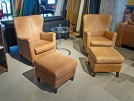
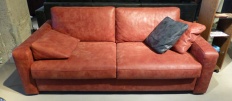
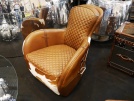
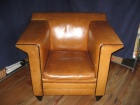
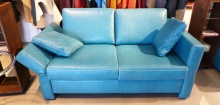
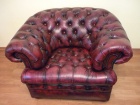
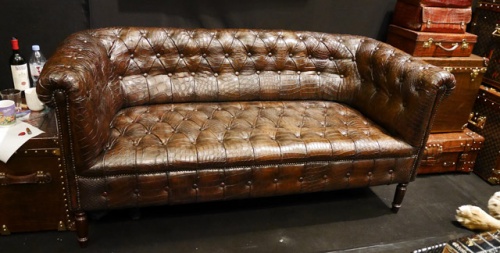
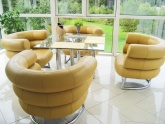
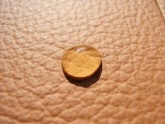
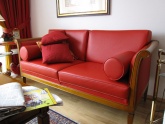
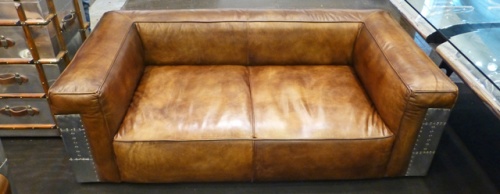
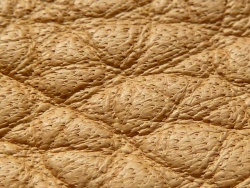
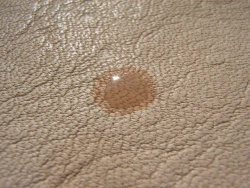
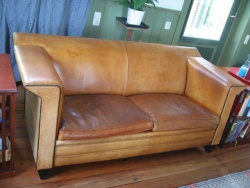
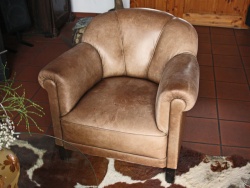
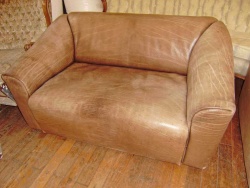
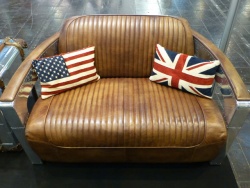
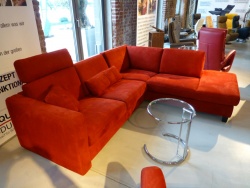
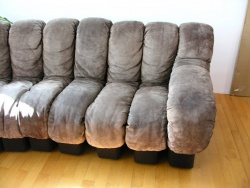
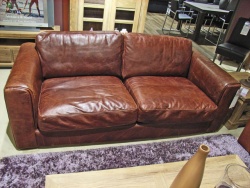
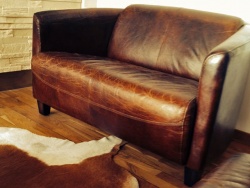
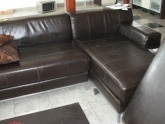
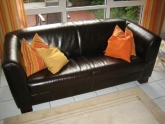
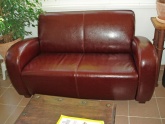
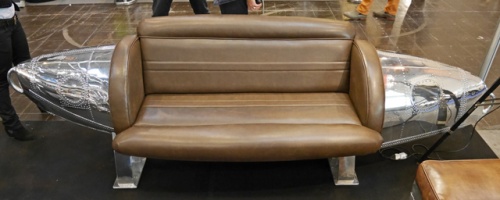
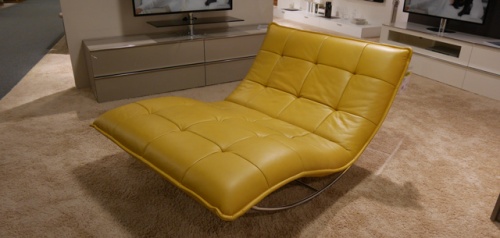


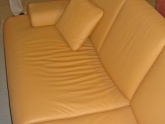
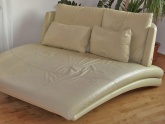
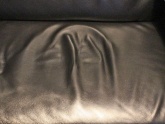
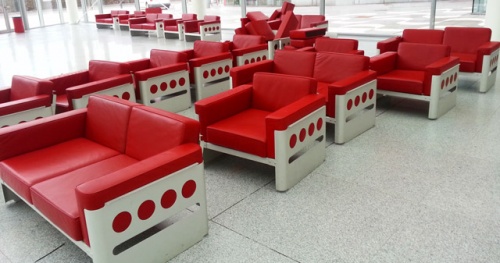
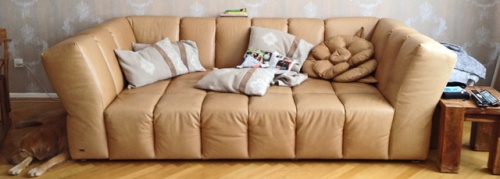
 a kotori web solution
a kotori web solution